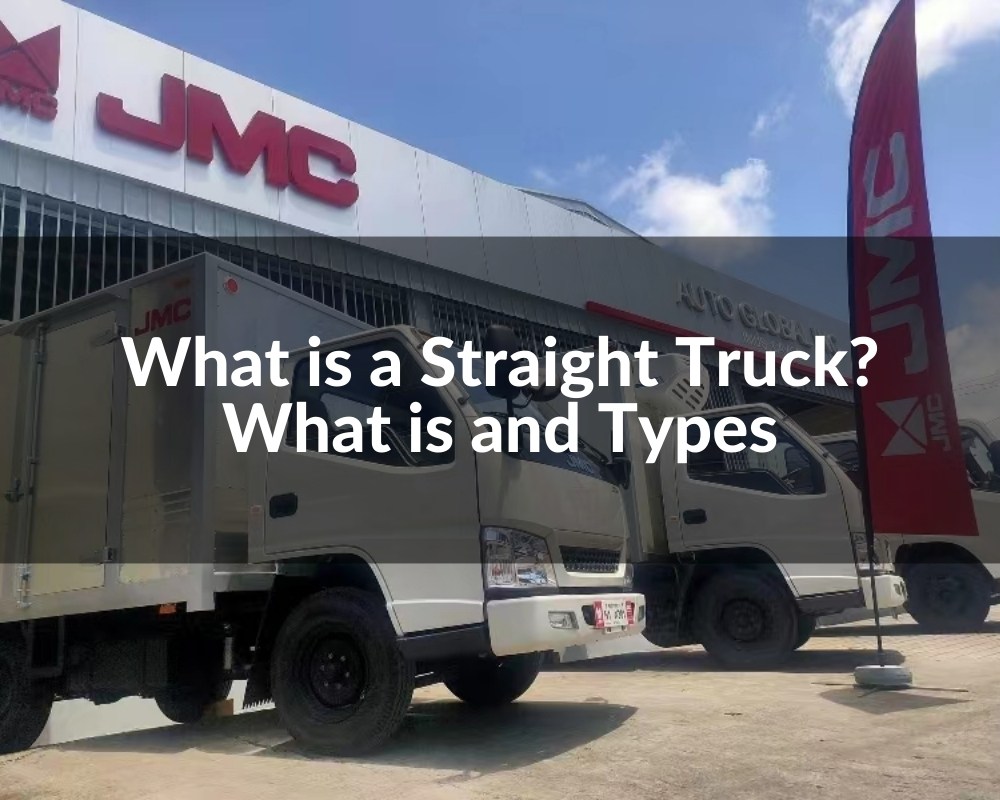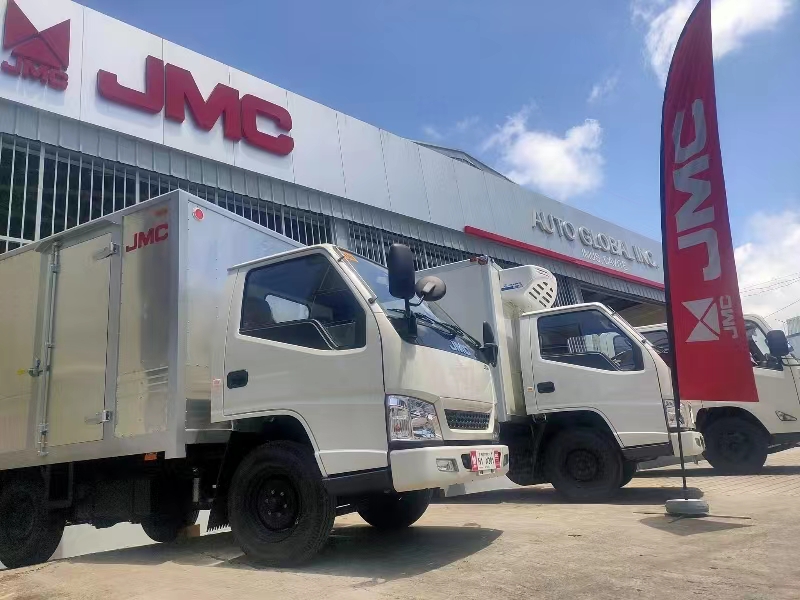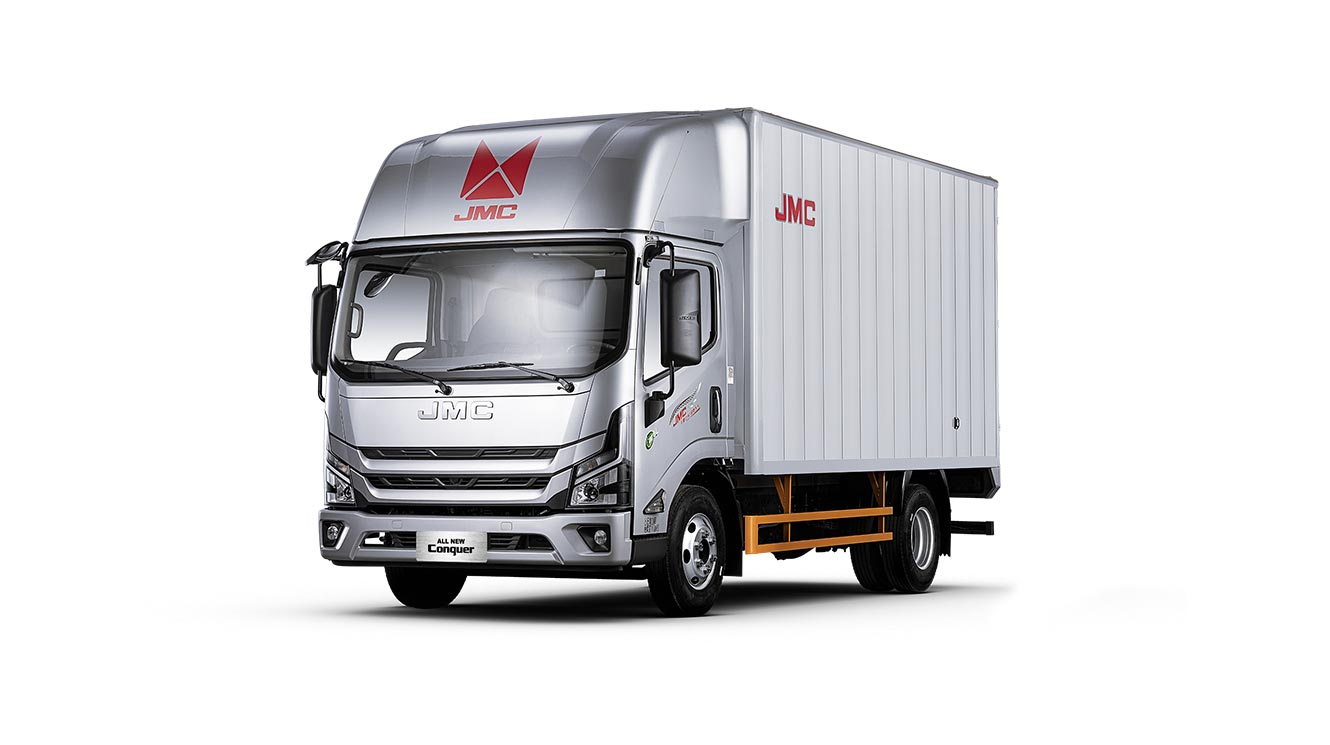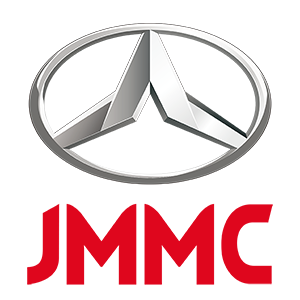What is a Straight Truck? What is and Types
- Categories:NEWS&EVENTS
- Author:
- Time of issue:2024-01-04 14:41
- Views:0
(Summary description)
What is a Straight Truck? What is and Types
(Summary description)
- Categories:NEWS&EVENTS
- Author:
- Time of issue:2024-01-04 14:41
- Views:0

Welcome to the comprehensive guide on Straight Trucks, an indispensable asset in the logistics and transportation sector. In this detailed exploration, we delve into what straight trucks are, their various types, the intricacies of their engines, transmissions, and capacities, as well as their safety features and environmental impacts. Whether you're in logistics, construction, or any industry requiring efficient transportation solutions, understanding the role and capabilities of straight trucks is key to optimizing your operations.
- What is a Straight Truck?
- Types of Straight Trucks
- Understanding the Engine, Transmission, and Capacity of Straight Truck
- Safety Features in Straight Trucks
- Fuel Efficiency and Environmental Impact
- Practical Applications of Straight Truck
- Straight Trucks vs. Semi-Trucks
- The Future of Straight Trucks
1.What is a Straight Truck?
Ever spotted a straight truck on the road and wondered what exactly sets it apart? Well, you're not alone. A straight truck, often known as a box truck, cube truck, cube van, or rolling toaster by those in the industry, is a truck with all of its axles attached to a single frame. Unlike a semi-trailer truck, where the trailer is hitched to the tractor unit, the cargo area in a straight truck is a fixed part of the truck itself.
This design offers a blend of flexibility and convenience, making straight trucks a common sight, especially in urban and suburban areas. They are ideal for hauling goods over short to medium distances. Typically, these trucks are the go-to choice for businesses like furniture companies, couriers, and movers, where easy maneuverability and accessibility are key. The design of a straight truck allows for efficient city driving, navigating through narrow streets and tight parking spots with ease, which is often a challenge for larger articulated trucks.
Furthermore, the structure of a straight truck includes a cab and an attached cargo box, which ranges in size from 10 to 26 feet in length. They come in various weight capacities, making them suitable for a diverse range of hauling needs. Some straight trucks are equipped with specialized features like refrigeration units for transporting perishable goods or lift gates to facilitate easier loading and unloading of cargo.

2.Types of Straight Trucks
Straight trucks come in a variety of types, each designed to meet specific needs in the vast world of transportation and logistics. Understanding these types is crucial for businesses looking to optimize their delivery and hauling solutions. Let's explore some of the most common types of straight trucks:
- Standard Box Trucks: These are the most common type, easily recognizable by their large, rectangular cargo areas. Ideal for transporting furniture, appliances, and other large items, they are a staple in the moving industry.
- Refrigerated Trucks: Also known as 'reefers', these are essential for transporting perishable goods. Equipped with cooling systems, they maintain specific temperatures to ensure the freshness of food products, flowers, and pharmaceuticals.
- Furniture Trucks: Specially designed for furniture transport, these trucks often have features like padded interiors and multiple tie-down points to prevent damage during transit.
- Landscape Trucks: Tailored for the landscaping industry, these trucks usually have open beds and are used to transport gardening tools, plants, soil, and other landscaping materials.
- Utility Trucks: Often used by service professionals (like electricians and plumbers), these trucks have various compartments and drawers for tools and equipment.
- Flatbed Trucks: These trucks have an open, flat bed with no sides or roof, making them ideal for transporting large, heavy, or irregularly shaped items that might not fit in a closed body truck.
Each type of straight truck is designed with specific features to cater to the unique demands of different industries. From temperature control to open spaces for bulky items, the versatility of these trucks makes them indispensable in efficient logistics and delivery services.
3.Understanding the Engine, Transmission, and Capacity of Straight Trucks
When it comes to selecting the right straight truck for your business, understanding the engine, transmission, and capacity is critical. These elements determine not just the performance but also the efficiency and suitability of the truck for specific tasks.
Engine Specifications
The engine is the heart of a straight truck. Typically, these trucks come equipped with either diesel or gasoline engines. Diesel engines are known for their longevity and fuel efficiency, making them ideal for long-distance and heavy-duty hauling. Gasoline engines, on the other hand, are more common in lighter trucks and are appreciated for their quick start-up in colder climates and lower initial costs.
Transmission Types
Transmission in straight trucks generally falls into two categories: manual and automatic. Manual transmissions offer greater control and are often preferred in situations requiring precise maneuvering. Automatic transmissions, however, provide ease of use and can reduce driver fatigue, which is crucial for urban deliveries and frequent stops.
Capacity Considerations
The capacity of a straight truck is a vital factor in determining its suitability for your needs. This includes both the cargo carrying capacity, typically measured in cubic feet, and the weight capacity, measured in pounds. Smaller trucks might offer around 500 cubic feet of space and can carry up to 5,000 pounds, while larger models can provide over 1,000 cubic feet of space and carry loads exceeding 10,000 pounds. Understanding your business's specific needs in terms of volume and weight is crucial in choosing the right straight truck.

4.Safety Features in Straight Trucks: Design and Regulatory Standards
Safety is a paramount concern in the design and operation of straight trucks. These vehicles come equipped with various safety features and are subject to stringent regulatory standards to ensure the safety of the driver, the cargo, and the public.
Key Safety Features
Modern straight trucks are outfitted with advanced safety features designed to mitigate risks on the road. These include anti-lock braking systems (ABS) for improved control during sudden stops, electronic stability control to prevent skidding and loss of control, and rearview cameras for better visibility. Additionally, many trucks are equipped with collision avoidance systems, lane departure warnings, and automatic emergency braking systems to further enhance safety.
Ergonomic Design
Ergonomics also play a crucial role in safety. The design of the cab in straight trucks focuses on driver comfort and ease of operation. Adjustable seats, steering wheels, and good visibility all contribute to reducing driver fatigue, which is a significant factor in road safety.
Regulatory Standards
Regulatory standards for straight trucks are rigorous and vary by region. These regulations often cover aspects like maximum load capacity, emission standards, and mandatory safety equipment. In many areas, straight trucks are also subject to regular safety inspections to ensure they are maintained in optimal condition.
5.Fuel Efficiency and Environmental Impact: Comparison with Other Vehicle Types
In today's environmentally conscious world, fuel efficiency and the environmental impact of vehicles are increasingly important factors for businesses. Straight trucks, like all vehicles, have their unique footprint in terms of fuel consumption and emissions, and it's essential to understand how they compare with other vehicle types.
Fuel Efficiency of Straight Trucks
The fuel efficiency of straight trucks varies based on size, engine type, and load. Generally, these trucks are designed to be as fuel-efficient as possible, considering their cargo capacity. Innovations in engine technology and aerodynamics have led to improved fuel economy in newer models. However, compared to smaller vehicles, straight trucks naturally consume more fuel due to their larger size and heavier loads.
Environmental Impact
The environmental impact of straight trucks is primarily related to carbon emissions from fuel consumption. The move towards more eco-friendly alternatives, such as electric and hybrid engines, is a growing trend in the industry, aimed at reducing the carbon footprint of these vehicles.
Comparison with Other Vehicle Types
When compared to semi-trailers and larger trucks, straight trucks are generally more fuel-efficient and have a smaller environmental impact, mainly due to their smaller size and more efficient use in urban settings. However, they are less fuel-efficient than smaller commercial vehicles like vans and light trucks, which are better suited for smaller loads and shorter distances.

6.Practical Applications of Straight Trucks
Industry Usage of Straight Trucks: Logistics, Construction, and More
The versatility of straight trucks makes them an integral part of various industries. In logistics, they are the backbone of last-mile delivery, essential for transporting goods from distribution centers to their final destinations. Their maneuverability makes them perfect for urban and suburban routes. In construction, straight trucks are used to haul materials like lumber, tools, and equipment to and from sites. They also find applications in sectors such as waste management, where their capacity and durability are crucial for efficient operations.
Licensing and Legal Requirements: Necessary Qualifications to Operate
Operating a straight truck often requires specific licensing, depending on the truck’s size and the region's regulations. Generally, a commercial driver's license (CDL) is required for larger straight trucks, especially those carrying heavy loads. The legal requirements may also include specific training or certifications, underscoring the importance of safety and proficiency in handling these vehicles.
Maintenance and Upkeep: Regular Checks and Common Issues
Regular maintenance is critical for the longevity and safety of straight trucks. This includes routine checks of brakes, tires, engines, and other vital components. Common issues such as tire wear, brake pad replacement, and engine maintenance should be addressed promptly to avoid downtime and ensure operational efficiency. A well-maintained truck not only ensures safety but also optimizes performance and fuel efficiency, contributing to the overall productivity of the business.
7.Straight Trucks vs. Semi-Trucks
When it comes to commercial transportation, understanding the differences between straight trucks and semi-trucks is crucial for making informed decisions about your fleet. While both serve vital roles in logistics and freight transportation, they have distinct features and applications.
Size and Maneuverability
One of the most noticeable differences is size. Straight trucks are generally smaller and more compact, making them ideal for navigating city streets and tight spaces. Semi-trucks, with their articulated design, are larger and require more space to maneuver, making them better suited for long-distance haulage on highways.
Cargo Capacity
In terms of cargo capacity, semi-trucks typically offer more space and can carry heavier loads compared to straight trucks. This makes them the preferred choice for bulk transport and heavy industrial goods. Straight trucks, while smaller in capacity, are excellent for quicker, smaller deliveries and are commonly used in last-mile logistics.
Operational Flexibility
Operational flexibility is another key difference. Straight trucks, due to their all-in-one construction, offer more flexibility for frequent stops and shorter routes. Semi-trucks, on the other hand, are optimized for long-haul transport, carrying large quantities of goods over long distances with fewer stops.
In conclusion, the choice between straight trucks and semi-trucks depends largely on the specific needs of your business, such as the type of cargo, delivery distances, and the environment in which the vehicle operates. Each type has its strengths, and choosing the right one can significantly impact the efficiency and effectiveness of your transportation operations.
8.The Future of Straight Trucks: Autonomous Driving and Electric Models
The landscape of transportation is evolving rapidly, and straight trucks are no exception. Looking towards the future, two major trends are set to revolutionize the industry: autonomous driving and electric models. These advancements promise to enhance efficiency, reduce environmental impact, and redefine logistics.
Autonomous Driving
Autonomous, or self-driving, technology in straight trucks is advancing at a brisk pace. This innovation aims to increase safety and reduce the costs associated with human operators. Autonomous straight trucks could revolutionize urban deliveries and logistics, offering round-the-clock service and optimizing routes for speed and fuel efficiency. The integration of advanced sensors and AI algorithms will also play a critical role in navigating busy city streets safely.
Electric Models
The shift towards electric models is another key development in the future of straight trucks. Electric straight trucks offer the promise of zero emissions, making them an environmentally friendly alternative to traditional diesel-powered vehicles. This is particularly important in urban settings where air quality is a significant concern. Beyond environmental benefits, electric trucks can also offer lower operating costs due to fewer moving parts and reduced fuel expenses.
Conclusion
In conclusion, straight trucks play a pivotal role in modern logistics and transportation, offering versatility, efficiency, and reliability. As we embrace the future with autonomous driving and electric models, the potential for innovation and sustainability in this field is boundless. Leading this transformative journey is JMC, China's foremost manufacturer of straight trucks. With a commitment to quality and innovation, JMC continues to set the standard in the industry, offering top-of-the-line vehicles that meet diverse transportation needs. Explore their range of exceptional straight trucks and find the perfect solution for your business needs.
Scan the QR code to read on your phone
Relevant Information




MESSAGE
WRITE A MESSAGE TO US
Copyright: Jiangling Motors Corporation Group GAN ICP 17001991-1 www.300.cn
Copyright: Jiangling Motors Corporation Group






